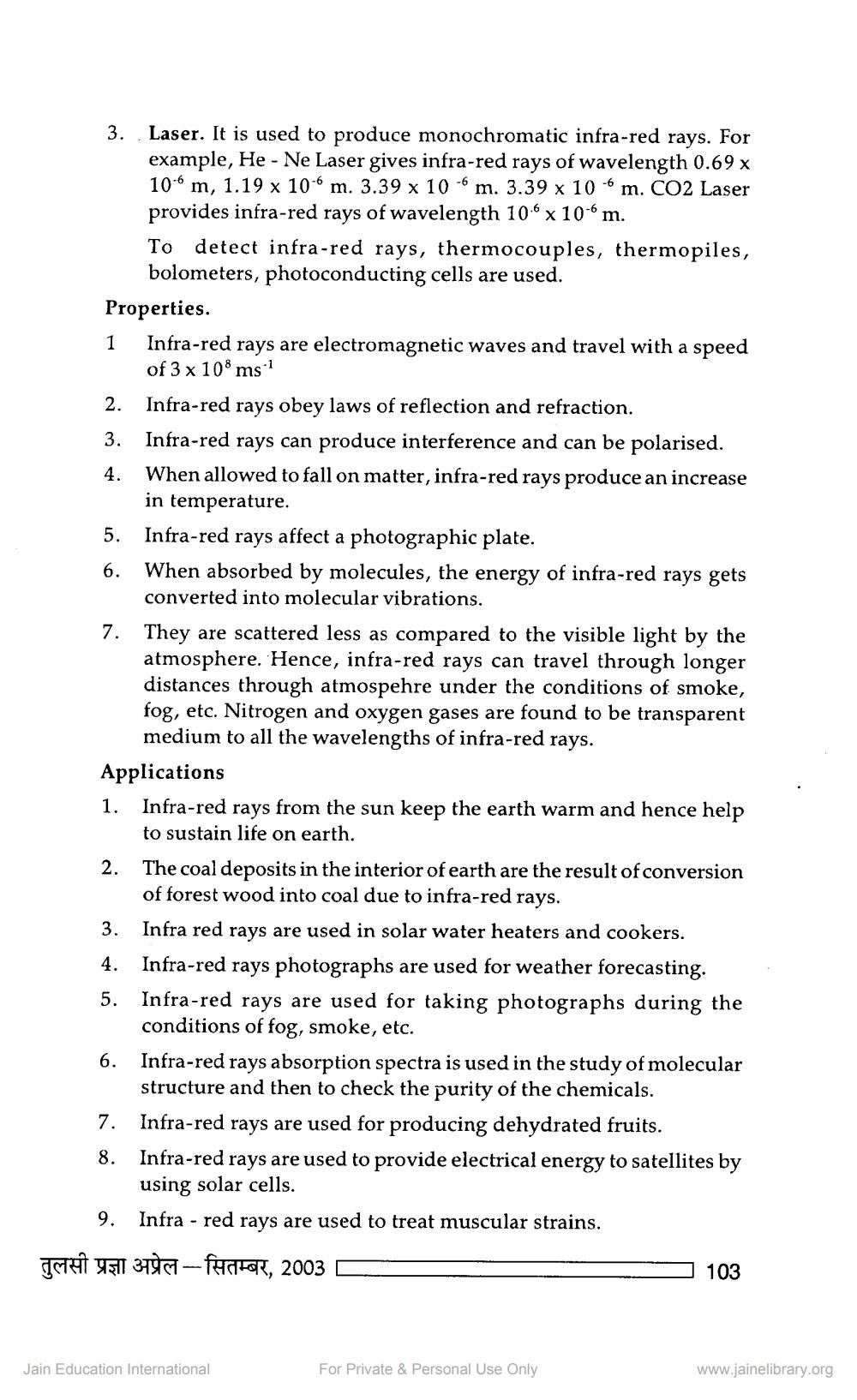________________
3. Laser. It is used to produce monochromatic infra-red rays. For
example, He - Ne Laser gives infra-red rays of wavelength 0.69 x 10 m, 1.19 x 10 m. 3.39 x 10 m. 3.39 x 10 m. CO2 Laser provides infra-red rays of wavelength 10.6 x 10 m. To detect infra-red rays, thermocouples, thermopiles,
bolometers, photoconducting cells are used. Properties. 1 Infra-red rays are electromagnetic waves and travel with a speed
of 3 x 108 ms -1 2. Infra-red rays obey laws of reflection and refraction. 3. Infra-red rays can produce interference and can be polarised. 4. When allowed to fall on matter, infra-red rays produce an increase
in temperature. 5. Infra-red rays affect a photographic plate. 6. When absorbed by molecules, the energy of infra-red rays gets
converted into molecular vibrations. 7. They are scattered less as compared to the visible light by the
atmosphere. Hence, infra-red rays can travel through longer distances through atmospehre under the conditions of smoke, fog, etc. Nitrogen and oxygen gases are found to be transparent
medium to all the wavelengths of infra-red rays. Applications 1. Infra-red rays from the sun keep the earth warm and hence help
to sustain life on earth. The coal deposits in the interior of earth are the result of conversion
of forest wood into coal due to infra-red rays. 3. Infra red rays are used in solar water heaters and cookers. 4. Infra-red rays photographs are used for weather forecasting. 5. Infra-red rays are used for taking photographs during the
conditions of fog, smoke, etc. 6. Infra-red rays absorption spectra is used in the study of molecular
structure and then to check the purity of the chemicals. 7. Infra-red rays are used for producing dehydrated fruits. 8. Infra-red rays are used to provide electrical energy to satellites by
using solar cells. 9. Infra - red rays are used to treat muscular strains. ICHT 451 37067 - fakta, 2003
103
Jain Education International
For Private & Personal Use Only
www.jainelibrary.org




